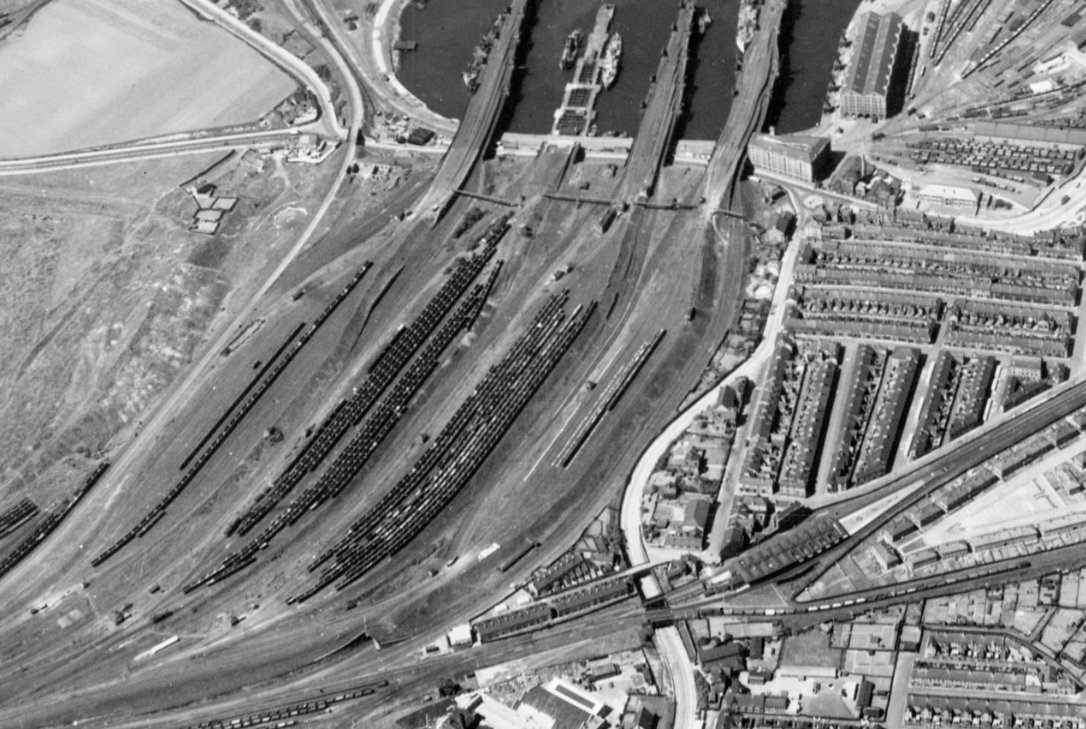
Tyne Dock
St Peter & St Paul Church, Tyne Dock
Last Updated:
30 Dec 2024
Tyne Dock
This is a
Church
54.975466, -1.441438
Founded in
Current status is
Extant
Designer (if known):
Brodrick, Lowther & Walker

Still operating as a church
I'm sure much to the delight of Bede, Tyne Dock also features a St Peter & Paul. The early 20th century was a time of great expansion in the area. Trade around the basin was roaring as we discussed yesterday, and the 1900s were its peak years.
With gaining demand came greater need for a larger workforce, so housing and infrastructure around the dock really came to fruition in the decades surrounding the 1900s. Of course with the combination of a sizeable Catholic community here as well as the influx of workers from abroad, a new Catholic church was required for worship.
There had been a mission room ere already in 1884, in the basement of the Exchange Buildings on Whitehead Street but was rendered inadequate for a proper congregation. The school-chapel was then used at this site from 1889, but again a proper church was needed as the congregation grew from at most 600 to 1300.
Opened in 1905, It was designed in the Romanesque style in Pelaw built brick by Brodrick, Lowther & Walker of Hull. They helped build the ecclesiastical & industrial landscape of East Yorkshire, and this is probably their northernmost creation. The edifice was to be 100ft long and 52ft broad with a nave, two ailes and a sanctuary. Seating for 600 was provided, so still not enough for a full mass of Sunday worshippers!
It is worth noting the author Catherine Cookson attended the church & school in the 1910s before she left for school at age 12.
Listing Description (if available)


Both Ordnance Surveys illustrated here depict the church and Tyne Dock between the 1910s and 1940s. The area had already reached its full zenith when the church was constructed, with the present construction a response to the swelling congregation as a result of these housing developments. Many folk living here will have either worked at Harton Colliery, Tyne Dock or the wider North Eastern Railway, the shipyards or at Wright's Biscuits just down the road.
You'll notice the sheer amount of amenities that developed along this stretch over the first half of the 20th century. 3 separate churches, a sunday school, a hotel, picture house & multiple clubs. This was effectively Harton & Tyne Dock's High Street.

We can turn the clocks back slightly to the 1890s, where we have an insight to the area some decade before the construction in great resolution. You'll notice the presbytery standing here which still remains, and the schoolroom next door which was used for services. The Congregational Church over the road and United Methodist Church up Boldon Street already existed. Infrastructure likely accelerated here given the site of Tyne Dock Station, which also featured its own booking office and waiting rooms at this stage. A set of cottages directly south will have housed the railway workers here.

The church & presbytery in December 2024

The church as it was in 1910 some 5 years after opening. The presbytery & school room are also shown. Source: Billy Embleton

The church is shown at the bottom of this shot, entirely outsized by the nearby marshalling yards. Tyne Dock, the Station Cottages and Wright's Factory are nearby. Source: Historic England Archive (RAF photography) raf_1cu_ah_o_ah483 flown 27 May 1942
